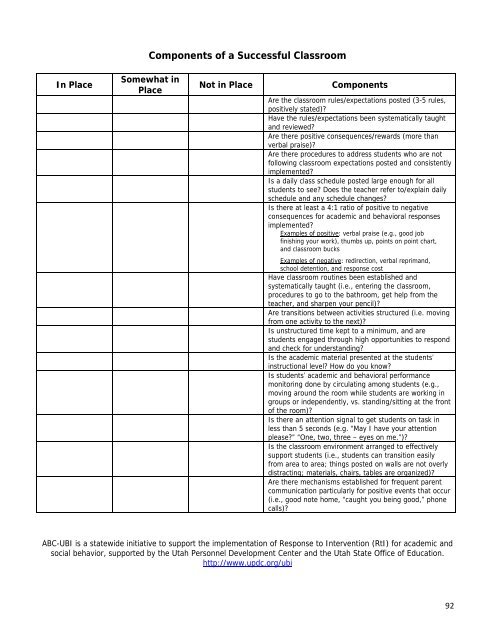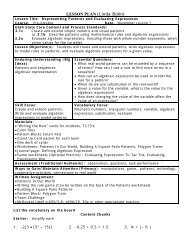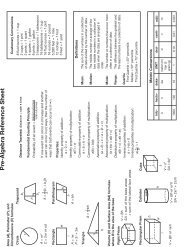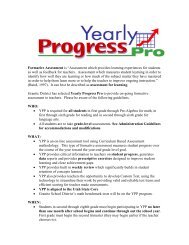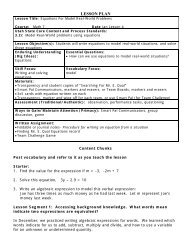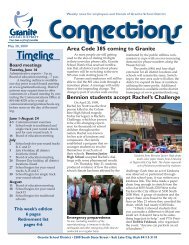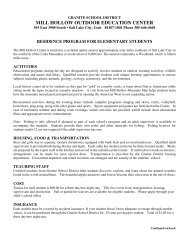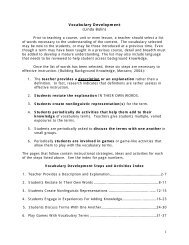Utah's Least Restrictive Behavioral Interventions Guidelines
Utah's Least Restrictive Behavioral Interventions Guidelines
Utah's Least Restrictive Behavioral Interventions Guidelines
Create successful ePaper yourself
Turn your PDF publications into a flip-book with our unique Google optimized e-Paper software.
Components of a Successful Classroom<br />
In Place<br />
Somewhat in<br />
Place<br />
Not in Place<br />
Components<br />
Are the classroom rules/expectations posted (3-5 rules,<br />
positively stated)?<br />
Have the rules/expectations been systematically taught<br />
and reviewed?<br />
Are there positive consequences/rewards (more than<br />
verbal praise)?<br />
Are there procedures to address students who are not<br />
following classroom expectations posted and consistently<br />
implemented?<br />
Is a daily class schedule posted large enough for all<br />
students to see? Does the teacher refer to/explain daily<br />
schedule and any schedule changes?<br />
Is there at least a 4:1 ratio of positive to negative<br />
consequences for academic and behavioral responses<br />
implemented?<br />
Examples of positive: verbal praise (e.g., good job<br />
finishing your work), thumbs up, points on point chart,<br />
and classroom bucks<br />
Examples of negative: redirection, verbal reprimand,<br />
school detention, and response cost<br />
Have classroom routines been established and<br />
systematically taught (i.e., entering the classroom,<br />
procedures to go to the bathroom, get help from the<br />
teacher, and sharpen your pencil)?<br />
Are transitions between activities structured (i.e. moving<br />
from one activity to the next)?<br />
Is unstructured time kept to a minimum, and are<br />
students engaged through high opportunities to respond<br />
and check for understanding?<br />
Is the academic material presented at the students’<br />
instructional level? How do you know?<br />
Is students’ academic and behavioral performance<br />
monitoring done by circulating among students (e.g.,<br />
moving around the room while students are working in<br />
groups or independently, vs. standing/sitting at the front<br />
of the room)?<br />
Is there an attention signal to get students on task in<br />
less than 5 seconds (e.g. “May I have your attention<br />
please?” “One, two, three – eyes on me.”)?<br />
Is the classroom environment arranged to effectively<br />
support students (i.e., students can transition easily<br />
from area to area; things posted on walls are not overly<br />
distracting; materials, chairs, tables are organized)?<br />
Are there mechanisms established for frequent parent<br />
communication particularly for positive events that occur<br />
(i.e., good note home, “caught you being good,” phone<br />
calls)?<br />
ABC-UBI is a statewide initiative to support the implementation of Response to Intervention (RtI) for academic and<br />
social behavior, supported by the Utah Personnel Development Center and the Utah State Office of Education.<br />
http://www.updc.org/ubi<br />
92


